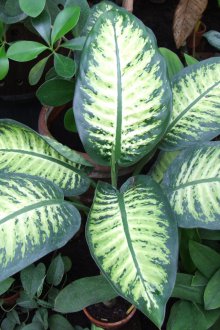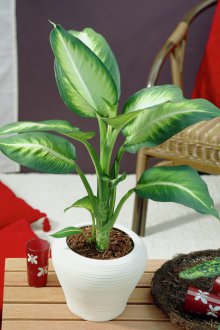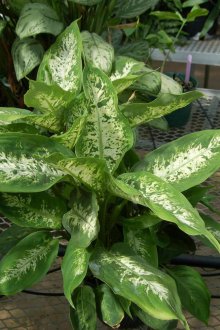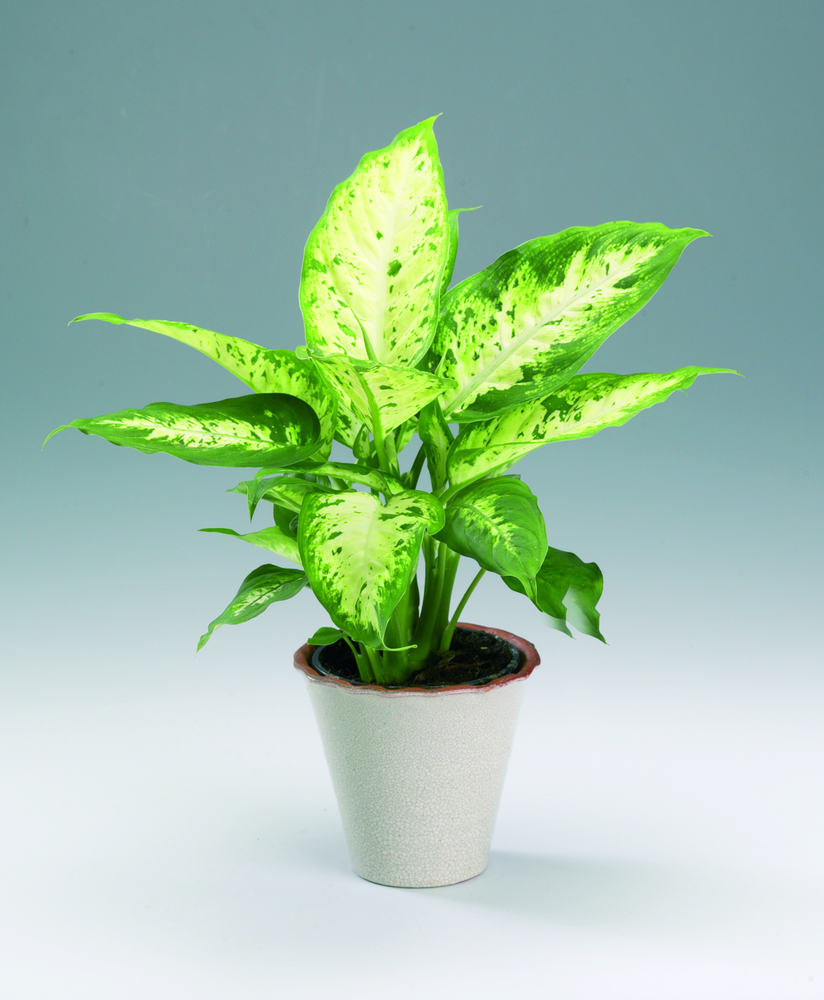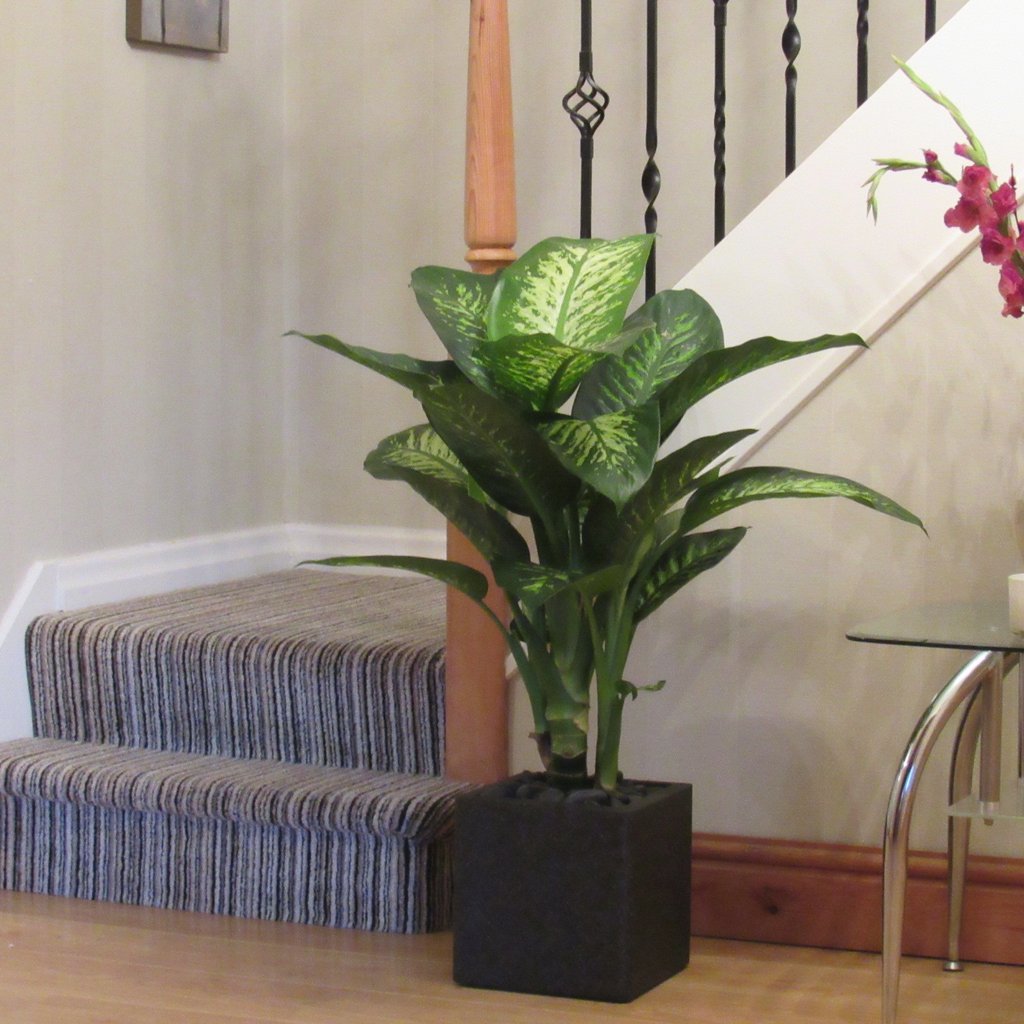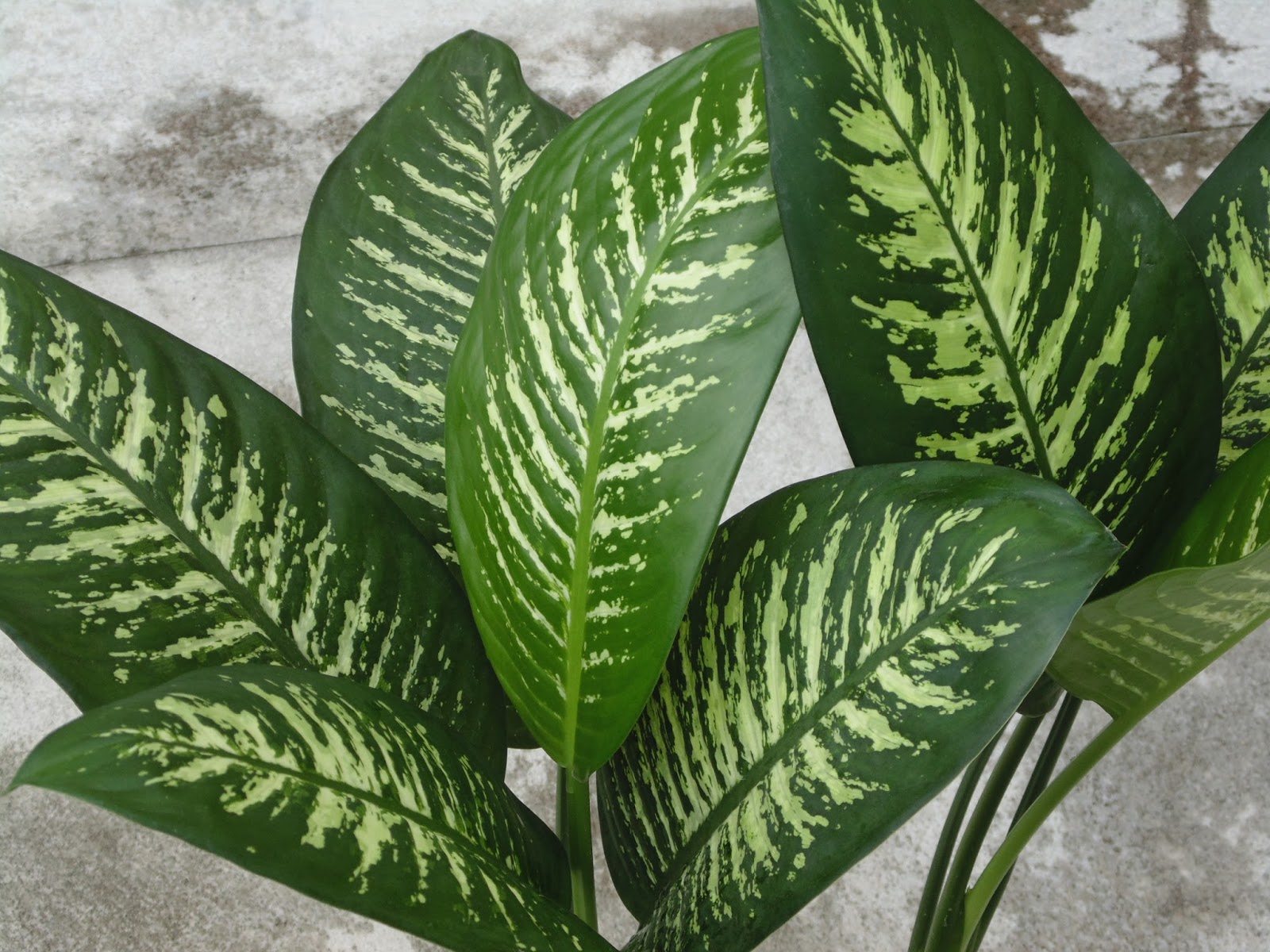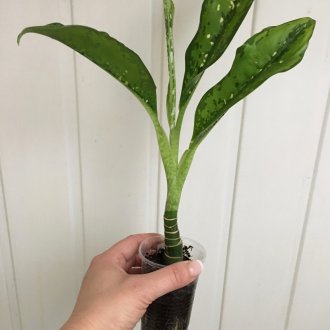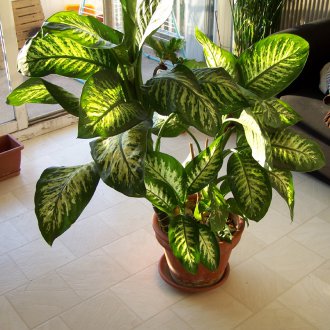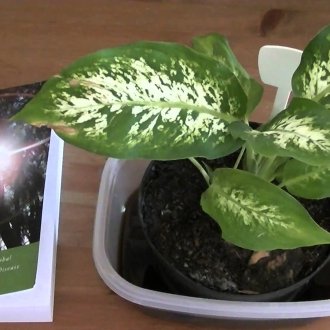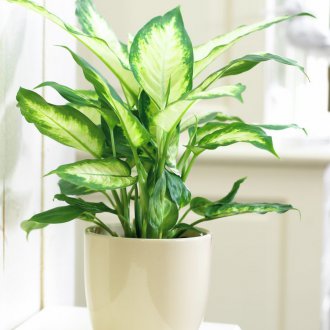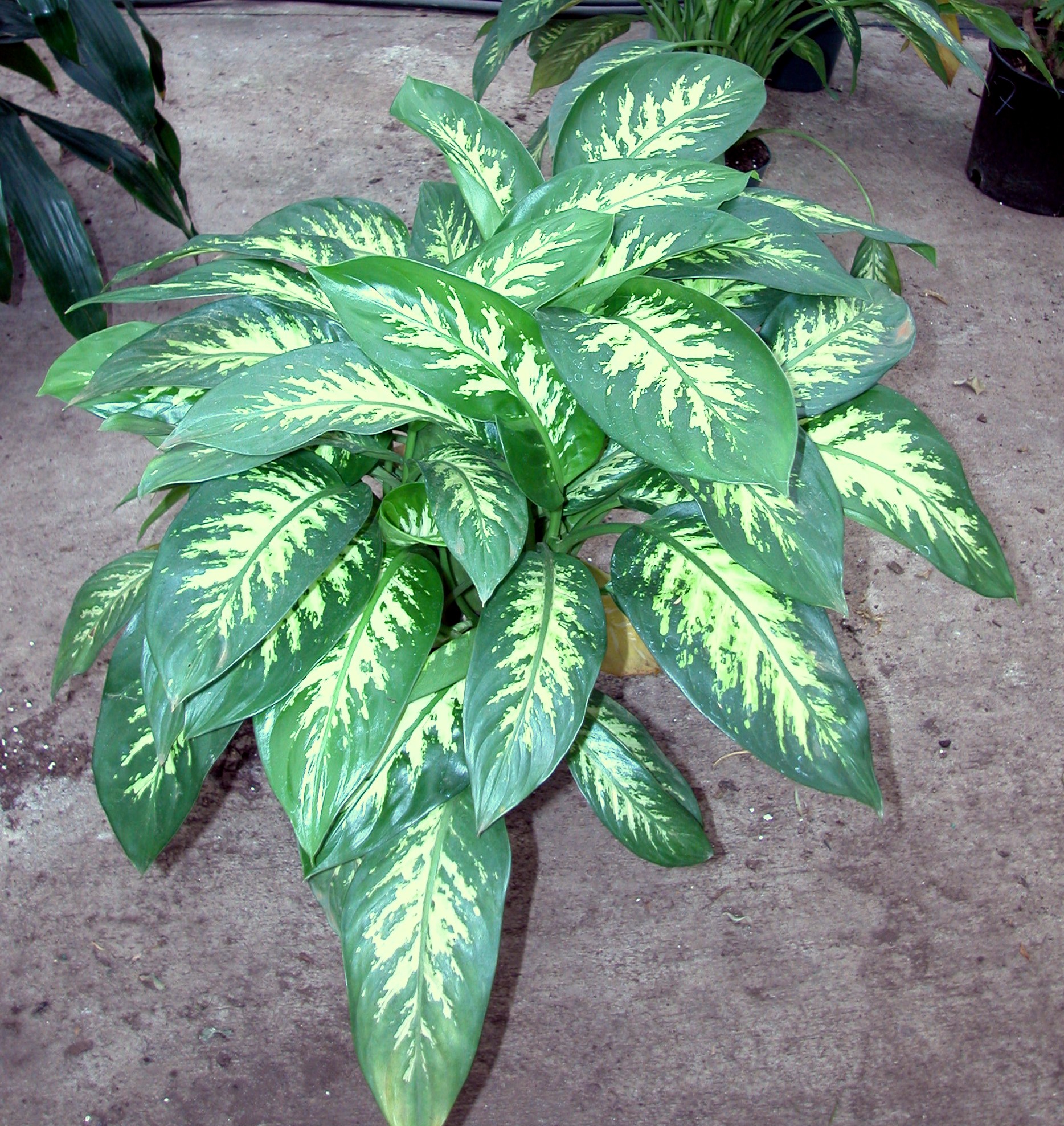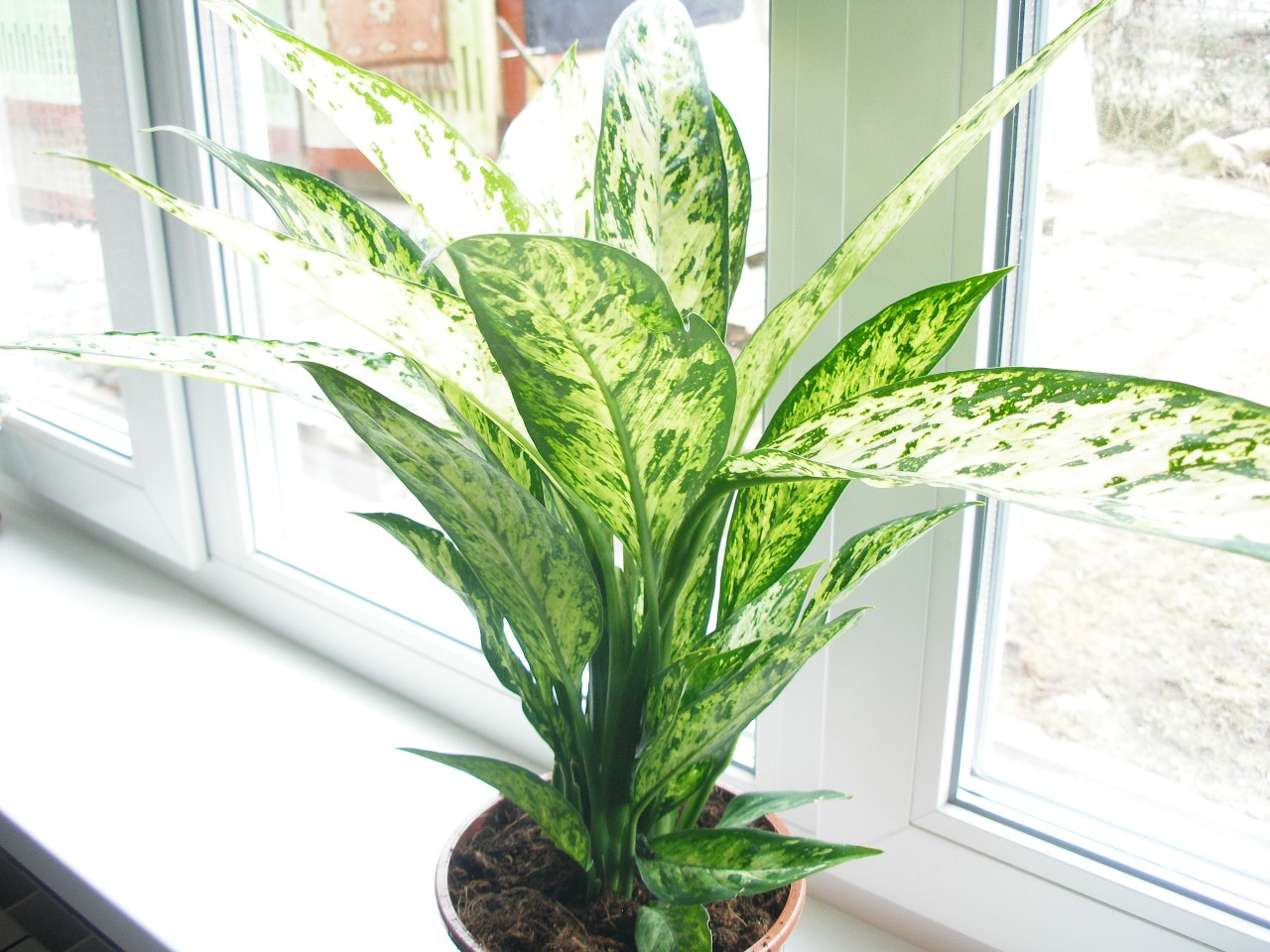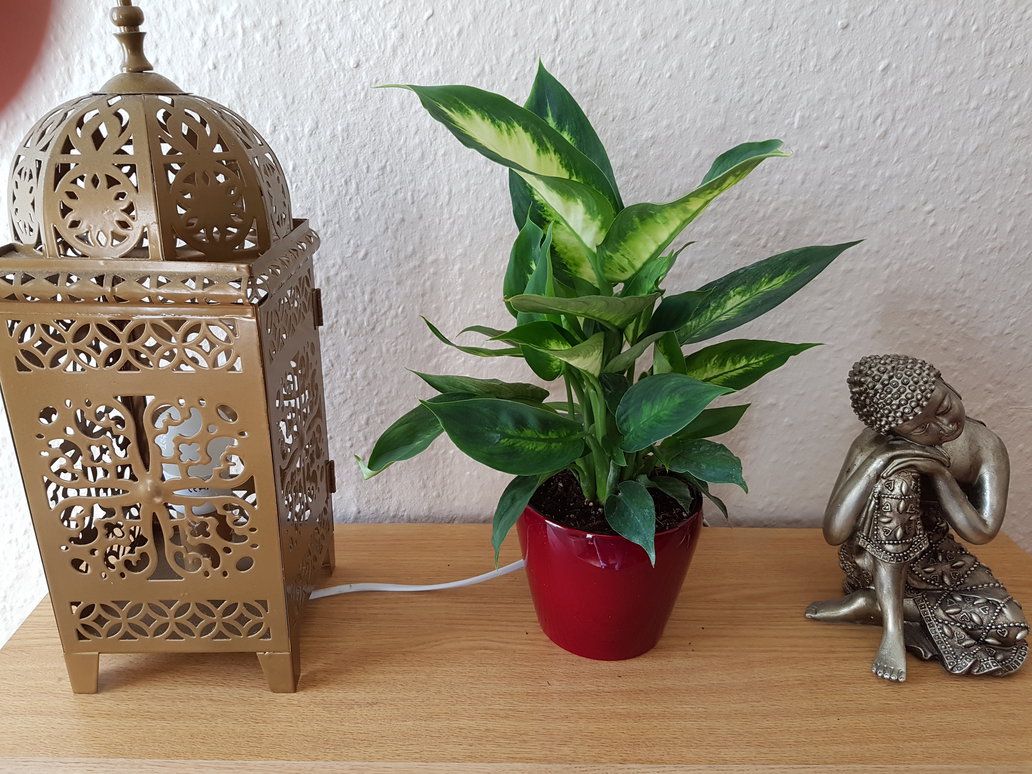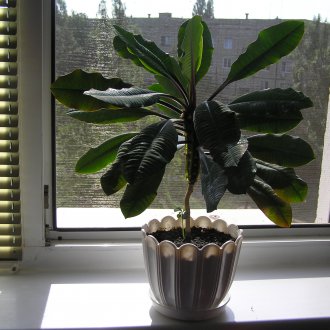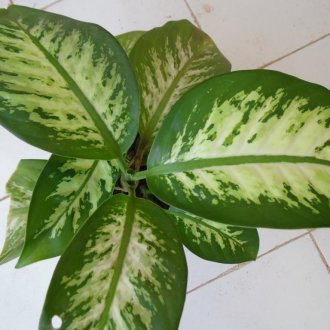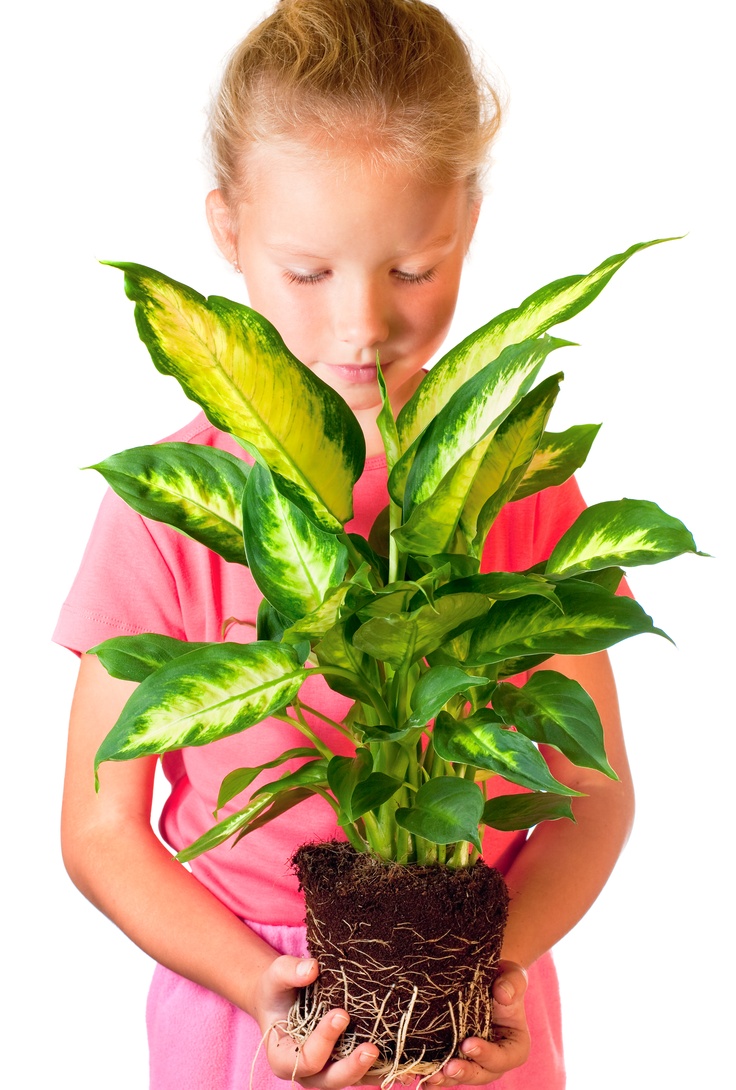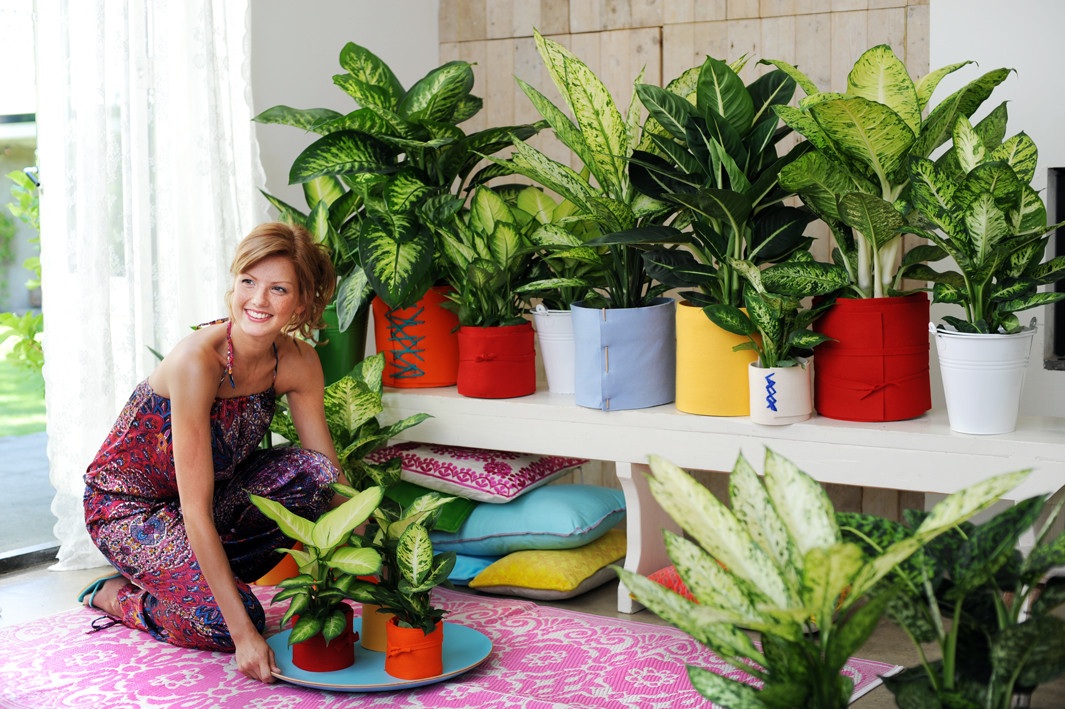Dieffenbachia: planting and care of a house plant (18 photos)
Content
Each grower is not alien to the desire to see the fruit of his labors as early as possible. One of the most grateful plants is Dieffenbachia - a tropical plant cultivated as an indoor plant for more than a hundred years.
The spectacular representative of the aroid family - the indoor flower of Dieffenbachia - deservedly enjoys the recognition of flower growers. The natural environment of this plant is humid tropics and subtropics, but it acclimatized perfectly in an office or ordinary apartment. A fast-growing, large plant with juicy stems, having beautiful foliage (bright green or variegated, interspersed with white, yellow or light green), has become a worthy decoration of offices and greenhouses.
Popular views for office and apartment
Lovers have taken root in various types of Dieffenbachia, bush and stem. The most popular:
- Spotted. Perhaps the most common representative. Reaches up to two meters in height, leaf width up to 12 cm with a length on petiole up to 40 cm. Spots of white or yellowish color of irregular shape are evenly distributed throughout the sheet. Blooms; the first flowering occurs no earlier than after two years of cultivation. Seeing the Dieffenbachia flower is considered the luck of the grower, this gift can only be obtained by providing quality care at home. The plain-looking flower stalk in the form of a cob wrapped in the bosom of the leaf, in the most persistent polluters, can also bear fruit: reddish berries.
- Large-leaved. It differs in a solid green color, the height of the stem is up to one meter. The leaf is large, ovoid.
- Dieffenbachia Bauman. The leaves of this species are covered with a small marble pattern, up to seventy centimeters in size.
- Dieffenbachia Vesuvius. Has narrow elongated leaves, is considered the most motley.
- Dieffenbachia Leopold. On a short stem are light green leaves 35 cm long, with a pronounced white stripe in the center.
- Bush. A plant with small spotting, a large white vein in the center of the leaf, up to 70 cm tall, giving abundant bushy growth.
Features landing Dieffenbachia
How to plant dieffenbachia? You need to start with the dishes in which the plant dear to the heart will grow. Knowing which of the varieties of Dieffenbachia we managed to get - bush or high-growing - we can choose the type of pot.
For the bush form of the pot does not matter, more attention should be paid to volume and height. The pot should be wide so that the expected young shoots have free space for growth. As the space is filled, we carry out a bush transplant with a complete replacement of the land or transshipment with a partial replacement and the necessary expansion of the "living space".
For typical varieties of Dieffenbachia, where the height of the luxurious plant reaches from one meter to two, and the size of the leaf with the cuttings is 35-40 cm, it is necessary to take care of a decent place of growth. From planting to flowering can take from two to four years. In the first six months, while the plant is gaining strength, the pot should be the size (height x width) is conditionally comparable to the size of the leaf with the handle, i.e. 20x20 cm. As the pot grows, it is necessary to significantly increase the pot for two reasons:
- Indoor plant dieffenbachia requires a sufficient amount of nutrients and moisture.The smaller the earthen lump, the less the plant will receive food for growth, the more often it will have to be watered and fed.
- To maintain elemental equilibrium. A thick juicy stalk, or even two or three, easily overturn a pot with insufficient mass. Conventionally, the weight of an earthen coma should be at least twice the weight of the green mass. If the volume of soil is larger, Dieffenbachia planted in good soil will thank the owner with lush, radiant freshness, greenery.
The ideal pot shape for tall Dieffenbachia is a cube. There are enough ceramic and plastic flowerpots of a cubic shape on sale. For those who have a talent for carpentry, it will not be difficult to build a beautiful tub in the country style, creating ideal conditions for growth: the roots will receive the maximum amount of oxygen for breathing, excess moisture will easily evaporate. And the weight of a wooden product is much less than ceramic, which will help to keep the floor in places of pressure from deformation.
Caring: Easy Tips
Dieffenbachia at home can not only grow, but also bloom, bear fruit and multiply in various ways.
How to water dieffenbachia? The main thing is not to overmoisten the soil. Growing dieffenbachia should be carried out in flowerpots with good drainage and in special soil containing 1 part sand, two parts peat, two parts sod land and 1 part humus. Carefully check the sod for the presence of larvae of insects and worms so that then you do not look for the reason why the leaves are drying and if the plant has a mysterious disease. For drainage, it is better to use expanded clay or broken brick.
Tropical plants like moist air, if the tips of the leaves begin to dry out - this is the first signal to moisturize the environment. In summer, spraying should be carried out as often as possible, in winter - once a day is enough.
One of the secrets of how to care for Dieffenbachia is the proper placement of the plant relative to the light source. Growing different varieties, we try to orient saturated green plants closer to the window, variegated and with large white patches - obscure or place in the far corner. Variegated varieties grown in bright light can easily lose their decorative effect.
Periodically, the leaves on the plants must be wiped. It is recommended to use a wet towel, and since the plant is poisonous, this procedure is best done with gloves. Dieffenbachia at home is easy to clean with a terry sock, worn on the arm. We defend water in the bucket (ideally, we take boiled or even distilled so as not to leave white stains on the sheet), rinse the Hand in the bucket and evenly wipe the entire area of the sheet, without fear of the plant juice getting on the skin.
By the way, the benefits and harms of Dieffenbachia are a matter of debate among amateur florists: is it possible to keep a planted flower with a dubious reputation at home?
All tropical plants are more or less toxic. If the dieffenbachia juice does not get on the skin, irritation in the form of redness may develop, contact with the eyes can cause temporary blindness. From young children, of course, Dieffenbachia should be removed away. But it brings much more benefits than expected. It turns out that Dieffenbachia at home has a unique ability to purify air from benzene and formaldehyde, turning the atmosphere of a city apartment into the cleanest air of the Amazon. With reasonable care, you can enjoy this magnificent plant that turns our home into a green kingdom.
Favorite plant: how to protect
Like all indoor plants, Dieffenbachia is susceptible to diseases and infection by ticks and other insects. How to grow a healthy plant?
A daily inspection is required. Stains on the leaves, dried tips, abnormal yellowing - everything can be the first sign of the disease.
- The spider mite will make itself felt with dotted light brown spots and a kind of spider web on the bottom of the leaf. The most insidious pest, the fight against it can drag on for months. The infected plant is immediately quarantined to avoid infection of its neighbors. No matter how bitter it may sound, it is better to completely eliminate dieffenbachia from the tick completely: the frequency of processing of chemical agents that kill the tick lasts for many weeks. During this time, you can grow a new healthy fast-growing dieffenbachia.
- The scabbard is easily detected - its turtles are placed in the axils of the leaves, the leaf cuttings are covered with a sticky coating. Effective means of control: insecticide "Actara".
Drying of leaves, wilting of a flowering plant yesterday is not always a sign of illness. It is afraid of drafts, a change in position relative to the light source is stressful for her, so careful attention and love for a green friend - Dieffenbachia - will allow you to grow a masterpiece of indoor floriculture at home.
